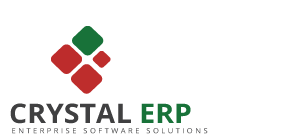Technology is now at the core of every business and a key component of remaining competitive is how well technology is implemented. Forrester values the UK IT market at £66.5bn annually and forecasts this figure to increase by 4.6 per cent in 2014.The planning for, investment in, and subsequent process of embracing technology must be considered a fundamental strategic issue by boardrooms everywhere.
A prominent example of neglecting to take effective technological implementation seriously is the recent IT problems suffered by NatWest and RBS. Ross McEwan, CEO of the RBS Group has admitted that this was due to a failure to invest properly in IT systems. This has led to three major system failures, the most recent of which hit consumers on Cyber Monday – one of the busiest shopping days of the year.
New and increasingly popular technologies such as cloud are revolutionizing the way companies work, but each bring fresh challenges. Technological change is now both crucial and inevitable but is often met with resistance within an organization. In order to ensure the buy-in of every single team member, businesses need to develop a culture of openness to change which must be ingrained in their organization at a fundamental level.
This may sound difficult to achieve, especially for larger organizations, but can be initiated through a simple four-step process of planning, education, consultation and training to truly embrace change.
1. Plan For The Impact Of Growth
Any company that has serious growth ambitions must have a good strategy for implementing new technologies that can scale up and down as required. Technologies like cloud can help companies accommodate growth easily, enabling them to concentrate on growing the business rather than getting distracted by IT concerns. Planning for the integration of new technology can take a lot of work but it’s too important a step not to take.
2. Educate Employees About Upcoming Changes & New Technologies
New technology has all sorts of demands, not least of which is education. People need to know how to use it. All staff need to be educated on any changes that are set to take place. All too often organizations focus too much on the technology, when actually it’s the people who make the real difference and realize the benefits of technological change.
3. Review, Understand & Act On Feedback From Employees
There will often be resistance as people defend the methods and technologies they’re used to. Consulting employees, and in particular implementing an effective feedback process will not only help to appease any concerns but will enable the company to gain an understanding of the true impact of change.
Employees are the people that have the best insight into what works, what doesn’t and what can be improved. Ford motor company offers rewards to employees who make suggestions which go on to be successfully implemented. This not only incentivises employees to understand, embrace and think about the technology they are using, it helps people to feel that they and their opinions are valued.
4. Provide On-Going Training For Every Step In The Change Process
Training is a fundamental part of adopting new technology. It needs to be company-wide at every level of the organization to ensure smooth adoption and integration. It’s surprising how many IT professionals aren’t confident in their ability with new technologies like cloud.
Technology is no longer confined to the IT department’s office, it now pervades every element of the business. Organization that can’t make the most of change and innovation face the threat of becoming extinct. Training for these changes is crucial. It can come from both internal and external providers and an on-going process of refresher training will help to ensure that everyone’s on the same page.
Any business with serious growth ambitions must be both willing and able to incorporate openness to change into their culture at a fundamental level. It’s not only small businesses that benefit from a ‘culture of change’. Technology also allows for larger businesses to retain a competitive edge as increasingly popular models of working like home working and BYOD can only be supported by major changes.
The organization that work closest with their staff when implementing technology will see the greatest benefits from it. A company’s staff are its greatest asset and their buy-in will speed up the adoption and optimisation of new technologies in the on-going change process.


Leave a Reply
You must be logged in to post a comment.